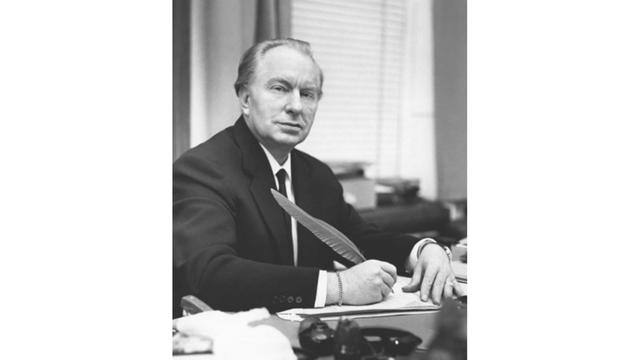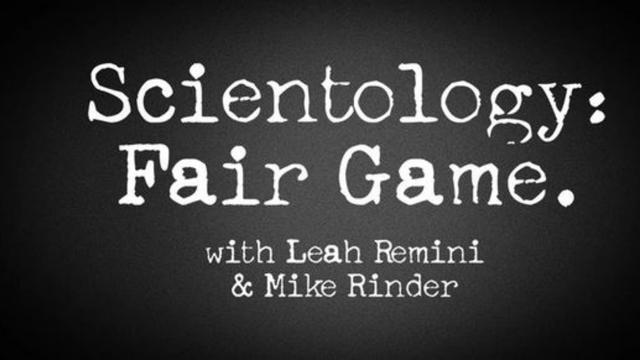A suppressive person is a non-Scientologist who tries to destroy Scientology. The short-lived fair game policy meant that actions against them were not punished by Scientology’s ecclesiastical courts.
by Massimo Introvigne
Article 2 of 5. Read article 1.


Among the most controversial features of Scientology ethics are the notions of “suppressive persons,” “fair game,” and “potential trouble sources.” They are often misinterpreted and need to be clarified by putting them into historical context.
In the 1960, Scientology’s founder L. Ron Hubbard proposed a number of reflections on what was making the progress of Scientology more difficult than he expected. As all newly established religions, Scientology encountered external opposition from a variety of sources. Hubbard singled out these opponents who consciously tried to suppress Scientology and labeled them as “suppressive persons” (SP).
Hubbard wrote that, “A SUPPRESSIVE PERSON or GROUP is one that actively seeks to suppress or damage Scientology or a Scientologist by Suppressive Acts. SUPPRESSIVE ACTS are acts calculated to impede or destroy Scientology or a Scientologist.”
These definitions were included in an HCO (Hubbard Communication Office) Policy Letter dated December 23, 1965, which in fact modified a similar Policy Letter of March 7, 1965 (originally misdated as March 1, 1965). The changes introduced are listed at the bottom of the December 23 document.
Although some of its provisions were later cancelled, the Policy Letter of December 23, 1965, remains of crucial importance for its theoretical content. Hubbard took a grim view of the SPs and their motivations. “The real motives of Suppressive Persons, he wrote, have been traced to quite sordid hidden desires—in one case the wife wanted her husband’s death, so she could get his money, and fought Scientology because it was making the husband well.”


Hubbard discussed two different problems: how to handle the SP and how to handle the Scientologists who were influenced and manipulated by the SP. As for the first problem, Hubbard’s letter instituted the policy of “fair game,” which would later become the source of innumerable controversies. “A Suppressive Person or Group becomes ‘fair game,’ Hubbard explained. By FAIR GAME is meant, may not be further protected by the codes and disciplines of Scientology or the rights of a Scientologist.” Additionally, “A truly Suppressive Person or Group has no rights of any kind as Scientologists and actions taken against them are not punishable under Scientology Ethics Codes.”
There is no doubt that Hubbard regarded SP as inherently dishonest persons, but two words in the last sentence are important. The first is “truly.” Declaring somebody “suppressive” should not be taken lightly. “A person or group may be falsely labelled a Suppressive Person or Group,” Hubbard noted in the same document. And he cautioned that, “The imagination must not be stretched to place this label on a person. Errors, misdemeanors and crimes do not label a person as a Suppressive Person or Group. Only High Crimes do so.”
By “High Crimes” Hubbard meant actions consciously aimed at destroying Scientology. The second key part of the sentence is that SP have no rights “as Scientologists.” Actions against them by Scientologists are not punishable by Scientology’s Ethical Committees. Obviously, this does not mean that SP lose their normal human rights as citizens. Nothing in the letter incites Scientologists to commit illegal acts against SP.
However, the term “fair game” was open to arbitrary interpretation and abuse, not to mention how it can be used by opponents to attack Scientology. Three years after it was introduced, the “Fair Game Law” was cancelled by another HCO Policy Letter dated October 21, 1968. Not unexpectedly, opponents of Scientology still mention the short-lived “fair game” policy to characterize any action taken by the Church of Scientology against them.


But what about those inside Scientology who were controlled or manipulated by the SP? These were defined as Potential Trouble Sources (PTS). The category had been introduced before 1965. An HCO Policy Letter of October 27, 1964, referred in its title to “Troublesome Sources,” and distinguished between different categories of “Threatening Sources.”
The first of ten categories concerned “Persons intimately connected with persons (such as marital or familial ties) of known antagonism to mental or spiritual treatment or Scientology. In practice such persons, even when they approach Scientology in a friendly fashion, have such pressure continually brought to beat upon them by persons with undue influence over them that they make very poor gains in processing and their interest is solely devoted to proving the antagonistic element wrong.” “They, the Policy Letter continued, by experience, produce a great deal of trouble in the long run as their own condition does not improve adequately under such stresses to effectively combat the antagonism. Their present time problem cannot be reached as it is continuous.”
Hubbard’s reflection on how the PTS and their relationship with the SP should be handled within Scientology led to the policies about disconnection, which will be the subject matter of the third article of this series.








